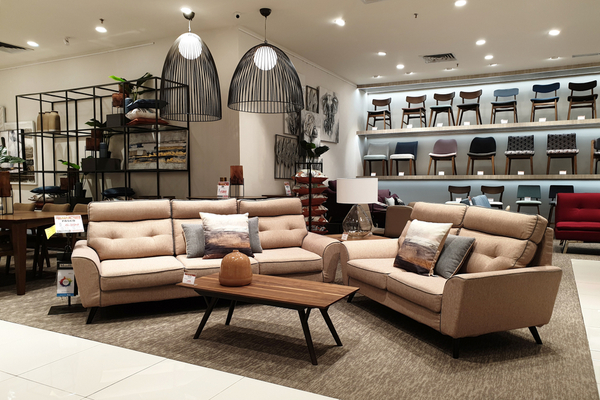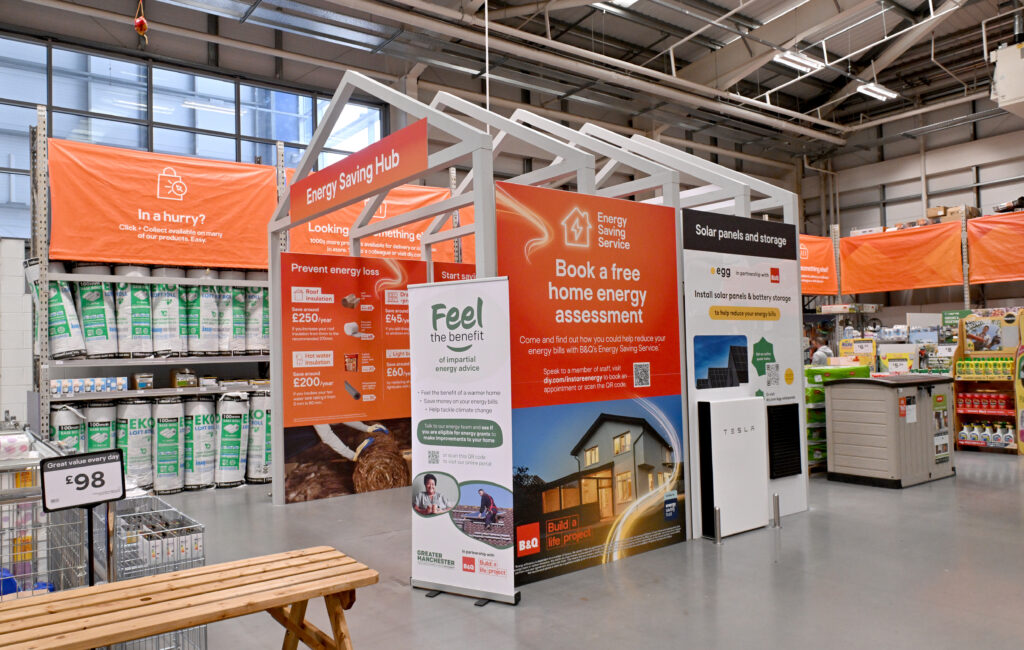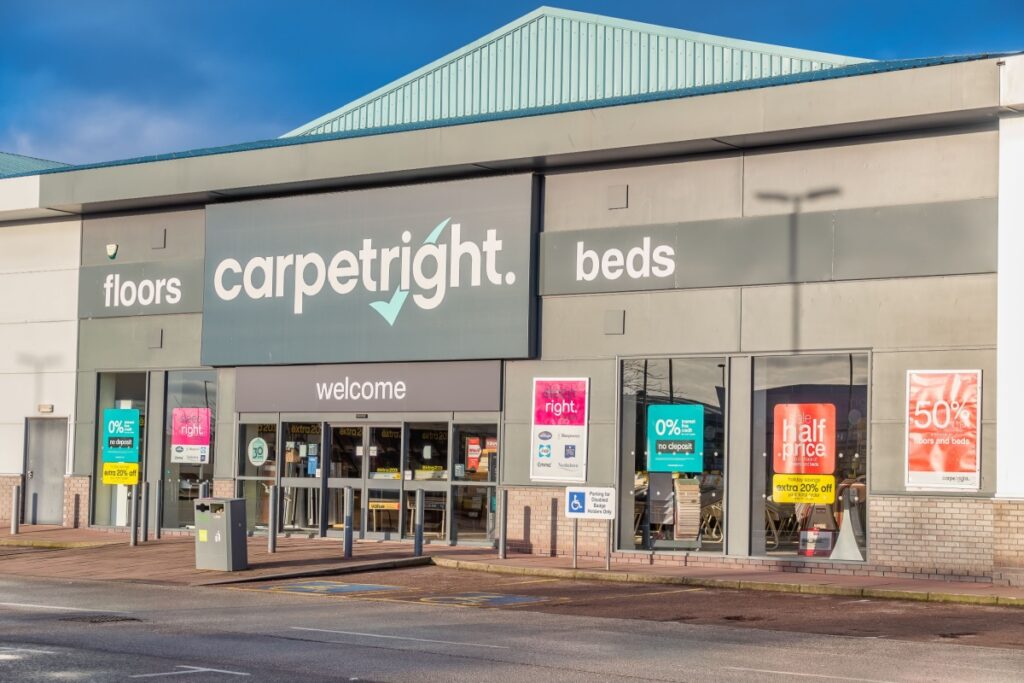At the beginning of the Covid-19 outbreak, Brits were forced to stay home amid multiple nationwide lockdowns and as a result of staying indoors many shoppers took the opportunity to decorate their homes and update their interiors with new furniture.
A recent survey from Made.com revealed that during lockdown, 40 per cent of consumers decided to invest in their homes with new homeware.
During the home renovation boom, even fashion retailers saught to capitalise with Mango launching its first ever homewear collection earlier this year, following PrettyLittleThing’s entry into the market in 2020.
This month, news broke that Ikea is poised to buy the former jewel in Sir Philip Green’s retail empire – Topshop’s flagship store on London’s Oxford Street, in an estimated £385 million deal, creating a new London home for the Swedish furniture brand.
The Oxford Street site is one of the most prominent locations on the UK’s shopping high street and has been occupied by Topshop since 1994.
Could Ikea’s venture into one of the world’s busiest high streets mark the start of the homeware sector’s exodus from big box stores and into city centres?
“The pandemic awakened consumers to the fact that home should be a special place”
Marcel Hollerbach, chief innovation officer at Productsup said that the loss of high street staples such as Debenhams and Topshop, and the subsequently increased availability of prime retail space, has created a vacuum in the UK retail sector, presenting a unique opportunity to reimagine the high street.
“Homeware companies could be one of the primary beneficiaries of this change and Ikea’s anticipated move into the heart of Oxford Street is genius,” Hollerbach told Retail Gazette.
“Ikea has long been eyeing up a move to the high street to get its products in front of more UK shoppers and has already had success in doing so in other cities across Europe, so this is a natural step for them to grow their business and build their brand.
“The in-store experience is changing to combat the pressures of commerce anarchy, and Ikea’s rumoured spot on Oxford Street would allow the retailer to give even more customers access to its brand experience.”
He explained that if Ikea does begin trading on Oxford Street, it will be far too small to house even half of the retailer’s product range and to remedy this the company must tailor its offering and use technologies such as AR to enhance the experience of shopping in a smaller Ikea store for the consumer.
“Having Ikea on your doorstep doesn’t solve the problem of delivery costs, but it does mean that more people will engage with the brand – including those who weren’t necessarily planning on making a deliberate trip to Ikea, but do happen to be casually browsing the high street. That’s the key here,” he added.
“Could it lead to a reimagining of the high street?
“It’s too early to say – but with the emphasis that brands are now placing on the in-store experience, this could be the future for homeware retailers.”
Melissa Minkow, retail industry lead at the digital consultancy CI&T added that a city centre approach will allow for ample foot traffic in a different way than out of town big box stores do.
“Shoppers can stop into city centre locations easily despite not having that as part of their original agenda,” she said.
“The only aspect that’s tricky about city centres for homeware furniture is that shoppers are far less likely to be stopping in with a car at the ready to drive large purchases home.
“Opting for a city location will mean having a solid delivery service option available or an easy way to encourage and track showrooming.”

If homewear and furniture high street stores do become the new normal, they’ll have to operate differently in the shopping experience and store layout.
“Brits will continue to spend their spare cash on homewares”
Martin Bysh, chief executive of Huboo, the Bristol-headquartered fulfilment technology provider said that experience will be paramount for these retailers, as it is for all physical shopping in a post-pandemic UK.
He explained that city centre homewares stores with a smaller footprint than their out-of-town counterparts will need to consider how to embrace digital solutions, such as virtual fit-out technology, allowing shoppers to successfully visualise products in their homes.
“Layout needs to be considerate of space so we should expect to see showroom style settings that inspire,” said Bysh.
“Although this is likely to mean a switch away from people being able to take their purchases away that day. Instead, much like the online shopping experience, customers may have to wait for orders to be dispatched as retailers combine their on and offline backend systems.”
Now that lockdown is over and shoppers are returning to leisure and entertainment activities that were once closed, it is unclear if the homewear boom will continue post-pandemic.
Eleonora Pantano, retail expect and marketing lecturer at the University of Bristol explained that during lockdown, consumers learned how to spend more time at home, and many were motivated to spend money on creating more comfortable spaces for work and leisure.
“Although things are opening up, including workplaces, many consumers will still be working from home some of the time and it’s likely we will continue to spend more time at home out of work too,” Pantano added.
“One effect of Covid is that people have learned to stay at home and this means people will keep investing in making their homes pleasurable places to work, socialize and relax. Thus, the expenditure on homewares will be higher if compared to pre-pandemic levels.”
Wayfair’s new Head of Europe Jens Uwe Intat added that while the pandemic “definitely boosted” demand for homeware both offline and online sector, customers acquired during Covid-19 still appear to look similar to other recent cohorts in terms of repeat trends.
During the initial pandemic period last year, Wayfair saw its active customers grow globally by 46 per cent to 26 million as shoppers sought to furnish their spaces for comfort and entertainment.
This figure now sits at 31 million active customers and counting, so the retailer continues to see substantial growth.
“Looking beyond the acute pandemic period, we expect the boom in homewear to continue, especially within the online sector,” said Uwe.
“Homeware isn’t an easy space to shop online”
When asked why she thought homewear retailers were becoming some of the last remaining businesses on the high street, Minkov said it was because the sector fits nicely on the high street.
“This is a category that can be impulse bought despite having a higher price point,” she added.
“This is an emotional purchase space, so making a destination out of it and embracing the experiential side is a natural move.”
Rob King, chief executive at Zedify the net zero delivery service said that while fashion retailers have dominated the UK high street for years with many starting to shop online, there’s an opportunity to cut back on expensive real estate and invest into optimising DTC experiences for customers.
“There’s a huge opportunity with logistics for instance, to extend this directly to people’s doorsteps rather than relying on faceless delivery services to cart goods around,” explained King.
“And as fashion retailers become more adept at this and look to reduce their physical footprints – perhaps to just a few city centre stores – brands that sell bigger ticket items like homeware, which inevitably need more space, can move in.”
As the furniture and homewear sector continues to boom and expand, how much growth is there within the sector and is more innovation needed?
Eleonora Pantano said that retailers need to provide new shopping experiences to be attractive for consumers.
“To succed on the high street Ikea needs to innovate”
She explained that the search for a new store format, such as Oxford Street, is an example of how to create new experiences, formats and services to keep the attention of consumers high.
“At least in the short term, the novelty will attract more consumers (both those interested in buying and the curious).
“However, in the long term, Ikea will still need to develop and demonstrate new solutions.”
Martin Bysh was in agreeance and said that there’s no doubt that more innovation is needed to get people outdoors and shopping on the high street again.
“Clearly we’ve seen homewares retailers like BHS, Debenhams and House of Fraser closing their doors due to shopper apathy so a lot needs to be done to lure people back.
“Consumers are used to all the features that online shopping offers, such as viewing a whole range on one page, searching by price, etc, so the more the high street can do to both replicate and advance on this the better.”
Bysh added that retailers need to provide a show and a real reason to visit if they are to not only encourage shoppers in, but keep them returning.
Click here to sign up to Retail Gazette’s free daily email newsletter

















